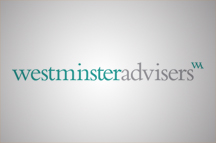 Never was Jessie J more mistaken than when she topped the charts in 2011 claiming “it’s not all about the money.” At the time, of course, she wasn’t talking about the NHS. But I’m sure she would agree the health service’s funding situation in 2015 brings her lyrics into question. Now many are asking - what Price Tag do policymakers put on the NHS?
Never was Jessie J more mistaken than when she topped the charts in 2011 claiming “it’s not all about the money.” At the time, of course, she wasn’t talking about the NHS. But I’m sure she would agree the health service’s funding situation in 2015 brings her lyrics into question. Now many are asking - what Price Tag do policymakers put on the NHS?
Last week, Chris Hopson, Chief Executive of NHS Providers, joined Westminster Advisers for a policy roundtable on the new government’s agenda for health and social care. Inevitably discussion turned to funding. We thought we would take a further look at the issue and set out some observations.
Trusts are now grappling with a 4 per cent increase in costs year on year, backed by a budgetary increase of just 1 per cent. Appearing in front of the Commons Health Select Committee a few days ago, health secretary Jeremy Hunt acknowledged that financial pressure on the NHS is “the worst it’s ever been in its history.” This is a significant statement. It almost signals the start of a conversation no government wants to have about what the NHS can do.
A gap appears to be emerging between what the NHS is required by government to deliver for patients and what it can afford. Demand for frontline care is rising. Government wants improved access for patients. Recent requirements on patient safety and experience compound the challenge.
This presents serious questions. With the focus squarely on maintaining services day-to-day, is the NHS in a position to adopt the most advanced new treatments and technologies? The Commonwealth Fund rated the NHS the number one health system in the world last year, particularly for equity, safety and access. If it is unable to keep pace with innovation in medicine and diagnostics can this remain the case?

Expectations for new efficiencies are mounting. Many savings made during the last parliament occurred from pay restraint. The interim Carter Review on NHS productivity identified only £5bn of the £22bn needed in savings by 2020. This is largely through reforming procurement and limiting nursing agency spend. New models of care are expected to deliver more efficiency but they will not come before 2017. Does this mean commissioners, providers and eventually policymakers will need to grapple with deeper variation in access, offer and waiting times highlighted by the latest NHS Atlas?
And so there is a watchful eye on the outcome for health from the Chancellor’s Spending Review on 25th November. Everyone knows ministers are committed to protecting the NHS from cuts. The big question is how quickly will the promised £8bn uplift in England’s health budget start to come through: whether it is front-loaded now, costing perhaps £20bn over the spending period to 2020, or deferred until the public finances show further improvement. Providers and everyone else, although possibly not Jessie J, await the decision.














